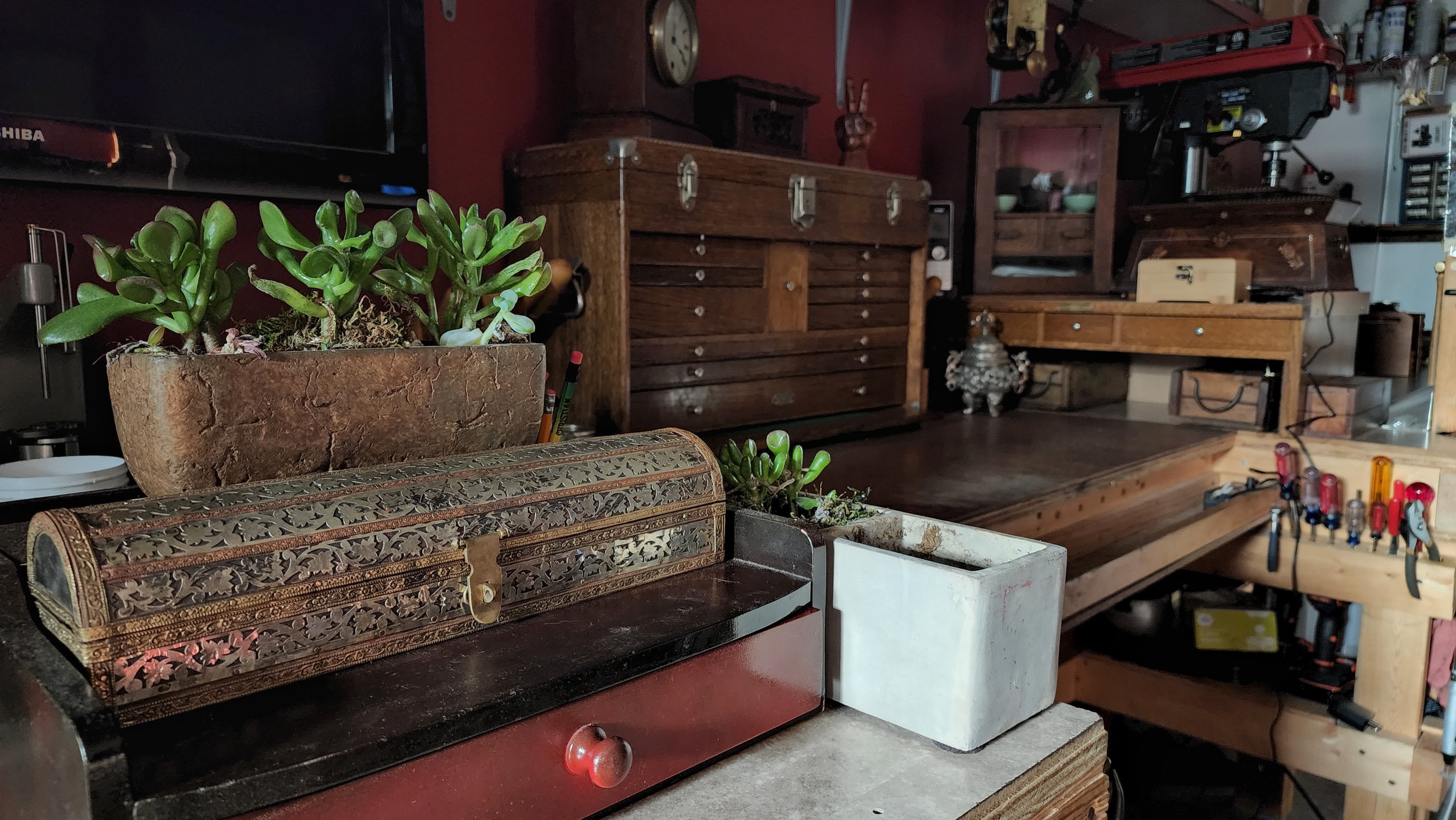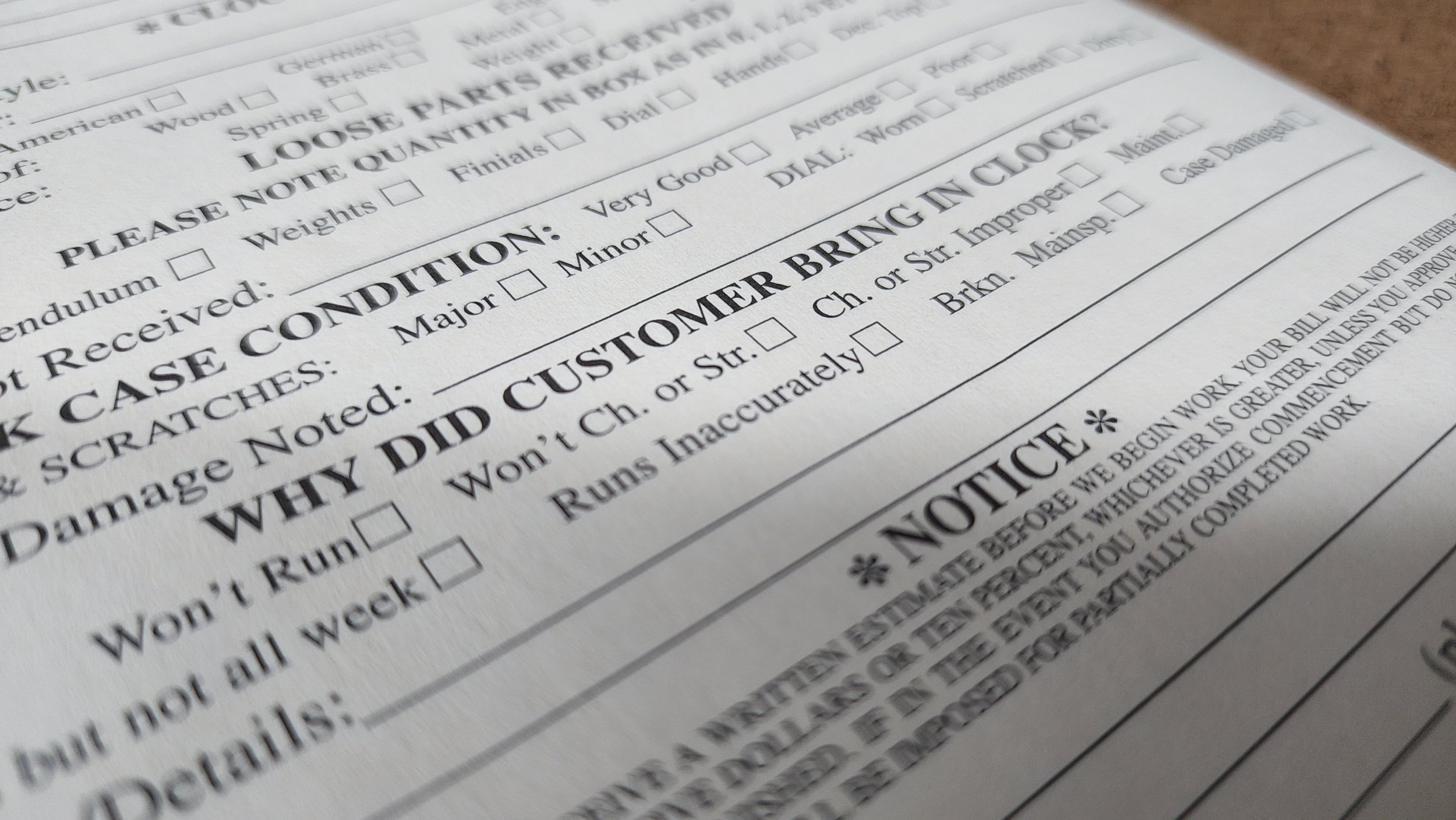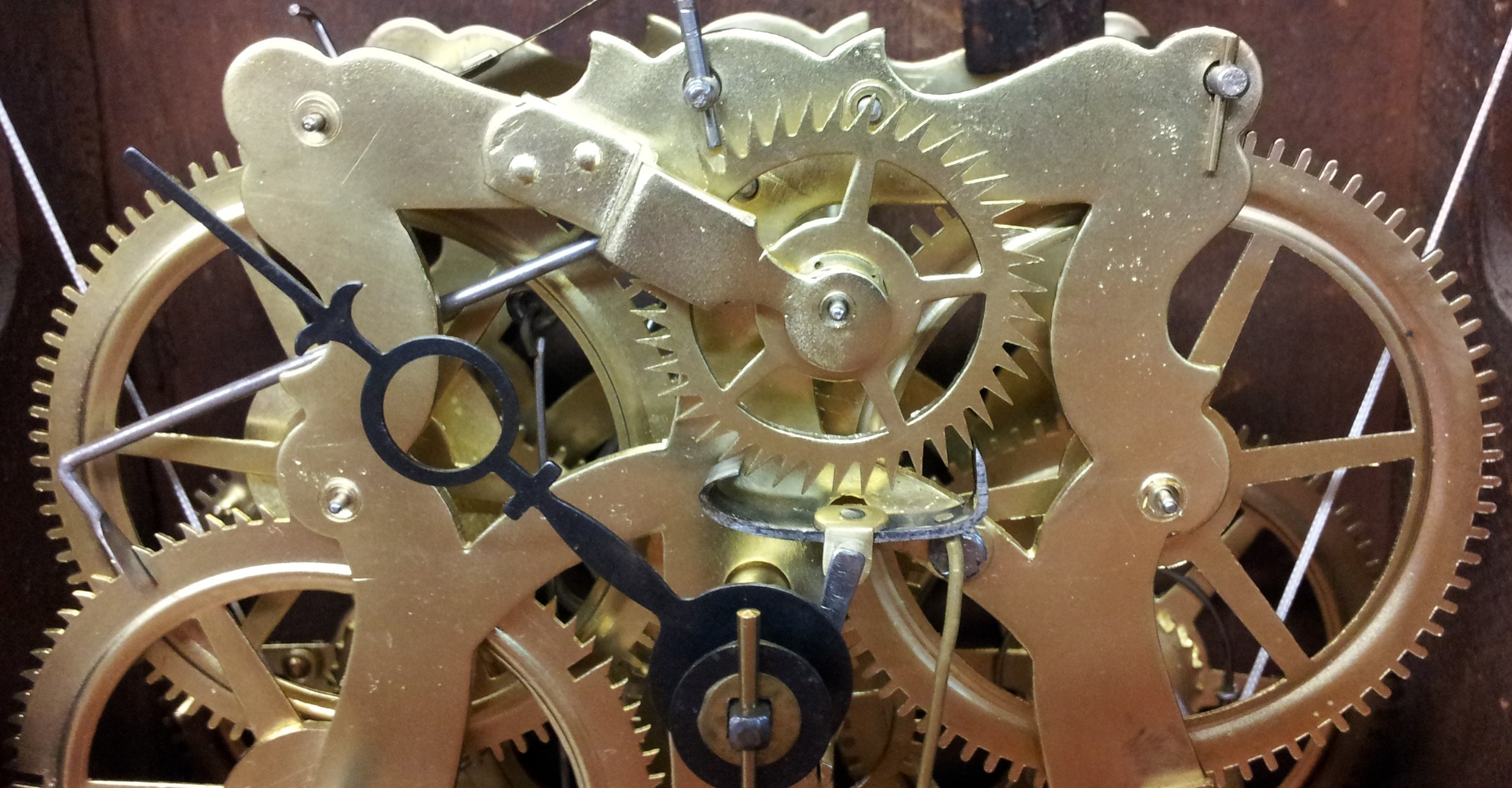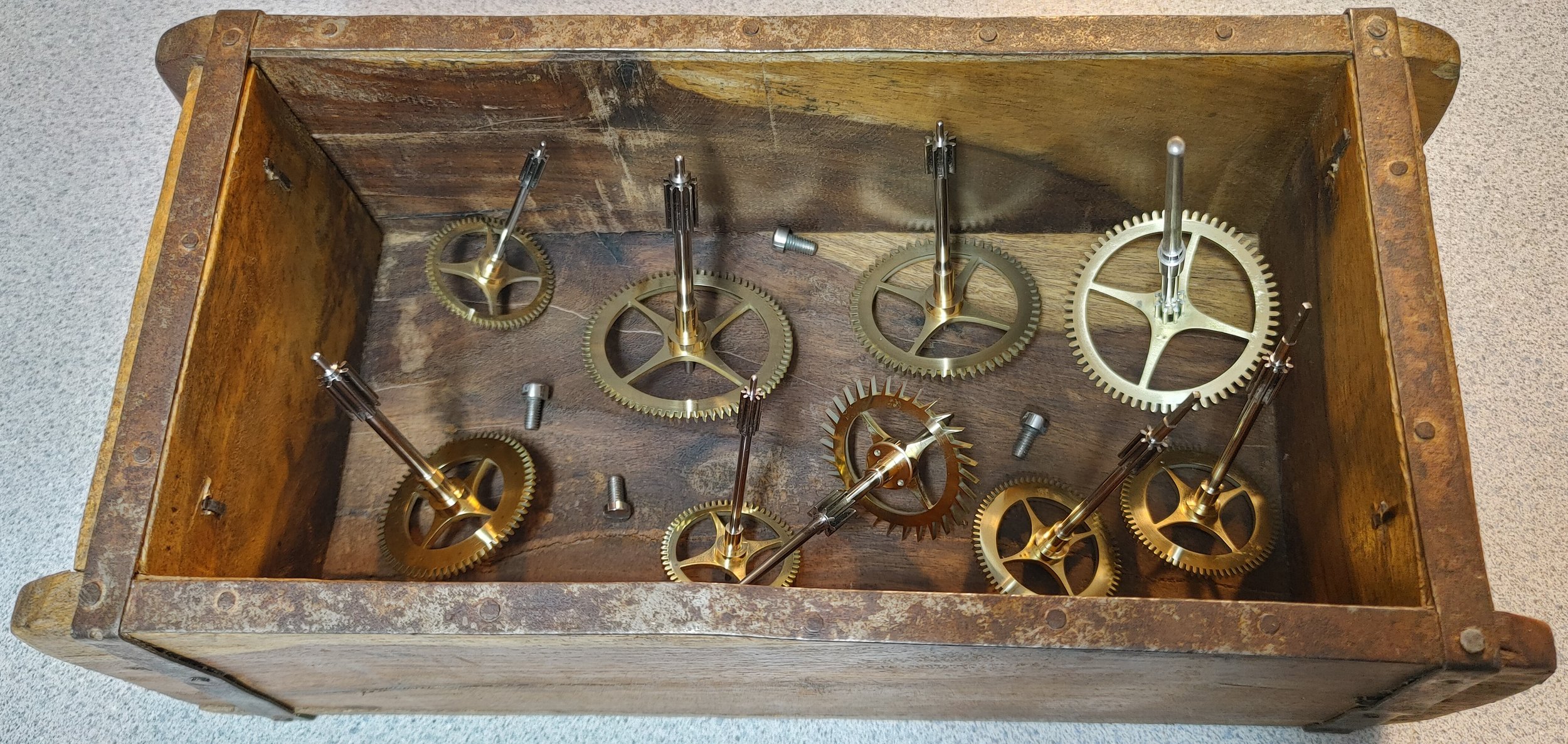
Our Estimating Philosophy

Guaranteed versus non-guaranteed repairs
the art of estimating
There may be as many repair philosophies as there are repairmen. But I believe that most of them will fall into one of three different categories. I am not talking about methods of repair. I am talking about what goes on inside the mind of a clockmaker when examining your clock in order to give you an estimate.
The ultimate goal is for the clockmaker to diagnose “exactly” why the clock is not working properly. More often than not, he is going to do this without the benefit of long-term testing and monitoring of the clock. He needs to be able to examine what he can see of the movement’s condition and combine that information with what the clock owner is telling him they are experiencing. There are an innumerable number of problems a clock might have, and the clockmaker needs enough experience to determine the cause in order to give the customer an estimate of the cost of the repair. A few typical problem examples would be clocks that have not been oiled for a long time, clocks that are extremely dirty, clocks that are not adjusted correctly, clocks that have broken parts like mainsprings, click springs or suspension springs and clocks that are worn out.
Needless to say, diagnosing the cause of a clock’s problem is not a perfect science. A clockmaker’s ability to do this accurately is largely dependent on his experience. Sometimes the diagnosis is obvious, other times it is not. What a clockmaker finds easiest to estimate is a clock with little or no wear, or one that is badly worn. A clock in good condition with very little wear may need only a minor repair such as a cleaning or oiling and adjustment. A clock that is worn badly, usually needs to be overhauled.
Unfortunately, sometimes appearances are deceiving. Clocks that “appear” to be in good condition when assembled, once cleaned or taken apart, may be in far worse condition than expected. This is the difficulty in properly estimating a clock, especially a very dirty one.
What does the repairman do when the clock’s condition falls somewhere in the middle, between being in really good, non-worn condition and badly worn? Does he recommend an oiling, a cleaning, or an overhaul? The only option that does not involve a risk to the customer is the overhaul because an overhaul comes with a guarantee, so that must be the right answer...right? I’m not always so sure.


For the following discussion, it is important to remember that we are now talking about a clock that is neither in very good condition nor very bad condition, but somewhere in between. What should the clockmaker recommend for his client? All wear is not equal! Some parts of a clock can wear quite badly and work just fine whereas other parts, with only a little wear can stop it cold. What if by looking into a “crystal ball” we could determine that the clock would run another ten years with just a cleaning or oiling? Would the overhaul still be the right answer? I don’t think so! In this case an overhaul is more than the customer really needs at this specific point in time.
Unfortunately, there is no crystal ball that will allow us to do this, but that doesn’t mean that some of these clocks, somewhere between worn a little and worn a great deal, might run another five to ten years or more. Once again, this is not a perfect science.
With no crystal ball in sight, what is the clock repairman to do? there are basically three different approaches to this question.
The first approach or “philosophy” is usually born out of improper training and or lack of experience. This philosophy usually centers around the clock needing to be cleaned as this is the limit of the individual’s level of skill. Because of this it appears to him/her that this is always the proper diagnosis; the clock is dirty. This person is unable to recognize that a clock might be worn out. More often than not, this person is afraid to dismantle the movement because he or she wouldn’t know what to do with it, and if he did take it apart, he wouldn’t know how to get it back together. This approach is going to work some of the time. However, it is bad news for the customer whose clock movement is now clean but still will not run!
The other extreme or opposite philosophy is that any old, antique or even slightly worn clock must always be overhauled. A clockmaker with this philosophy believes that they are protecting the customer because if they do not overhaul the clock, they are, more than likely, not going to guarantee the job. In one sense this is true. The other thing this person is trying to avoid, is an upset customer who pays for a cleaning that does not work because it really did need an overhaul. I used to agree with this concept because it does make some sense. The downside to this approach is that sometimes an antique clock, in spite of its age, is not worn badly enough to justify an overhaul. In other words, just because a clock is “old” and has “some wear” does not necessarily mean it must be overhauled.
The trick of course, is knowing which clocks need the full job and which do not.


Remember our “crystal ball”? What if the clock really did not need to be overhauled? Are customers protected when charged hundreds and sometimes thousands of dollars for an overhaul when perhaps an oiling and adjustment, at a much lower cost, would have been sufficient? They got what they paid for, but did they get what they needed?
I cannot in good conscience automatically always recommend an overhaul in this situation unless I am quite sure the clock needs it. That does not mean that I won’t suggest it. To imply however that it is the only option, is in my opinion, dishonest.
This then leads us to the last philosophy I will discuss. Like Goldilocks who found one bed too soft, one bed too hard and one just right, that is how I feel about my philosophy, it’s just right, not only the right approach, but the honest thing to do.
What do I do? I educate and inform! A customer may not always know what is best for their clock, but a customer knows what is best within their circumstances. Because of this I give my customers options where it is appropriate. I try to educate my customer so that he or she knows the clock’s condition, the repair options, the potential risks involved, if it is likely that the estimate might change as the work progresses and whether there is or is not a guarantee. I explain the difference between cleaning a clock and restoring a clock. By doing this the customer is better able to make an informed decision. The majority of my customers appreciate this approach. Let me make it clear when I say, “The customer knows what is best for their circumstances”, that I do not mean that I let the customer tell me what the clock needs. What I mean is that the customer knows how much money he or she has available, their tolerance for risk, the value they place on the clock, and whether they are thinking for the long or short term.
This approach causes me to spend more time with my customer during the estimating process. More time at the front counter means less time at the bench performing repairs. When I have discussed this with other clockmakers I know, they invariably say that they cannot afford to operate this way as it takes too much time. Unfortunately for the clock owner they sometimes get a repair that is much more than they actually needed. This is why what I do is quite rare.

Restored Antique American Strike Movement

If you want to know which clockmakers operate this way look for signs that say, “All Repairs Guaranteed”? This sounds like a good thing, right? Not necessarily. This means they are forced to push you into the most complete and expensive repair they offer. I can always guarantee my work, but I cannot always guarantee the clock. What is the difference you ask? If you choose a minor repair on a slightly worn clock, I can guarantee that the work I perform (cleaning or oiling and adjustment) was done correctly. What I cannot guarantee is that the work performed is enough to repair the problem when the customer chooses the minor repair over the major one. It may be that this slightly worn clock really does need to be completely rebuilt. We will not know for sure until I attempt the repair. This is why the risk is explained to the clock owner in advance and the repair is paid for in advance.
Some people would rather not have to make the decision between a cleaning and an overhaul. They expect me to know what should be done because I am the professional. For this customer I would more than likely recommend the overhaul. This takes away any uncertainties concerning how the repair will turn out. I know the clock will be in great shape when I am done, and the customer knows he is going to get a guarantee. I feel good about offering the overhaul because the customer did not want options; the customer wanted the clock in optimal working condition.
This is how I approach the variables involved in the process of clock repair. Other clockmakers may agree with me, and others won’t. That’s okay with me! If you affirm the rationale in this approach and you have a clock needing repair, I welcome the chance to serve your clock repair needs.

Polished Gears for Elliot Grandfather Clock